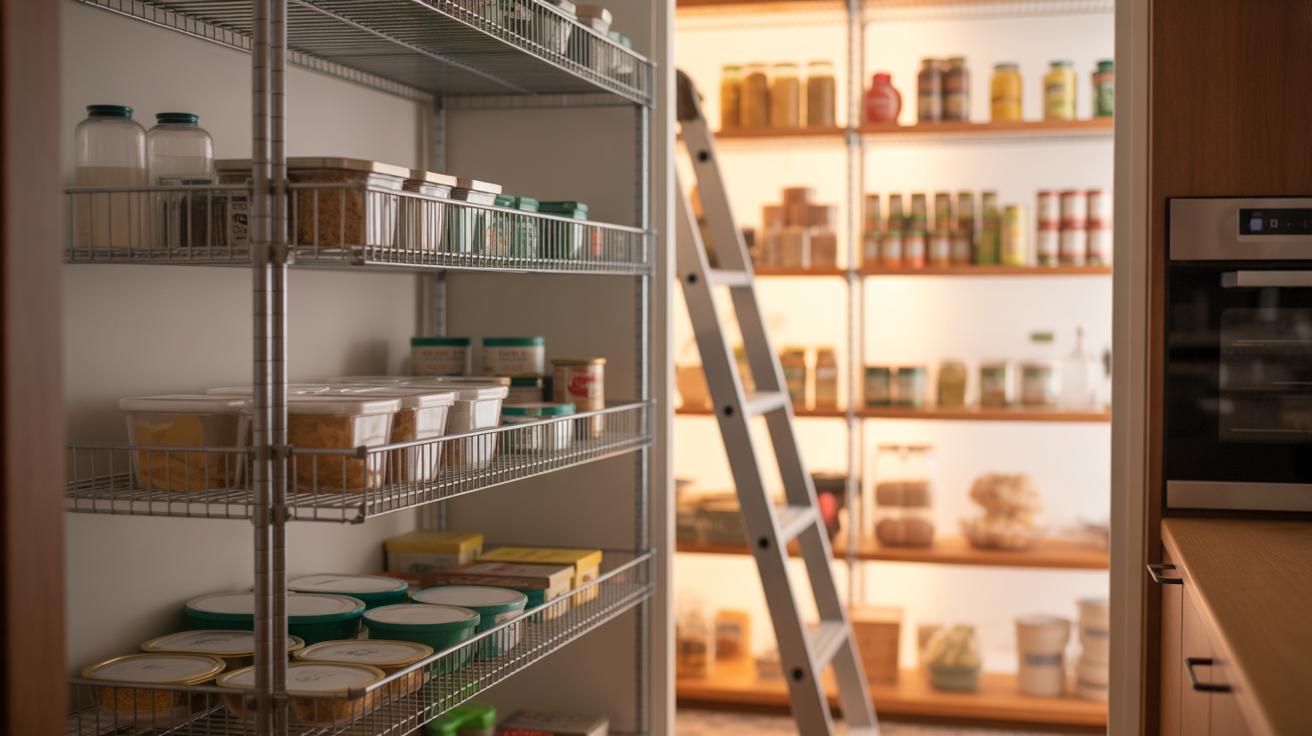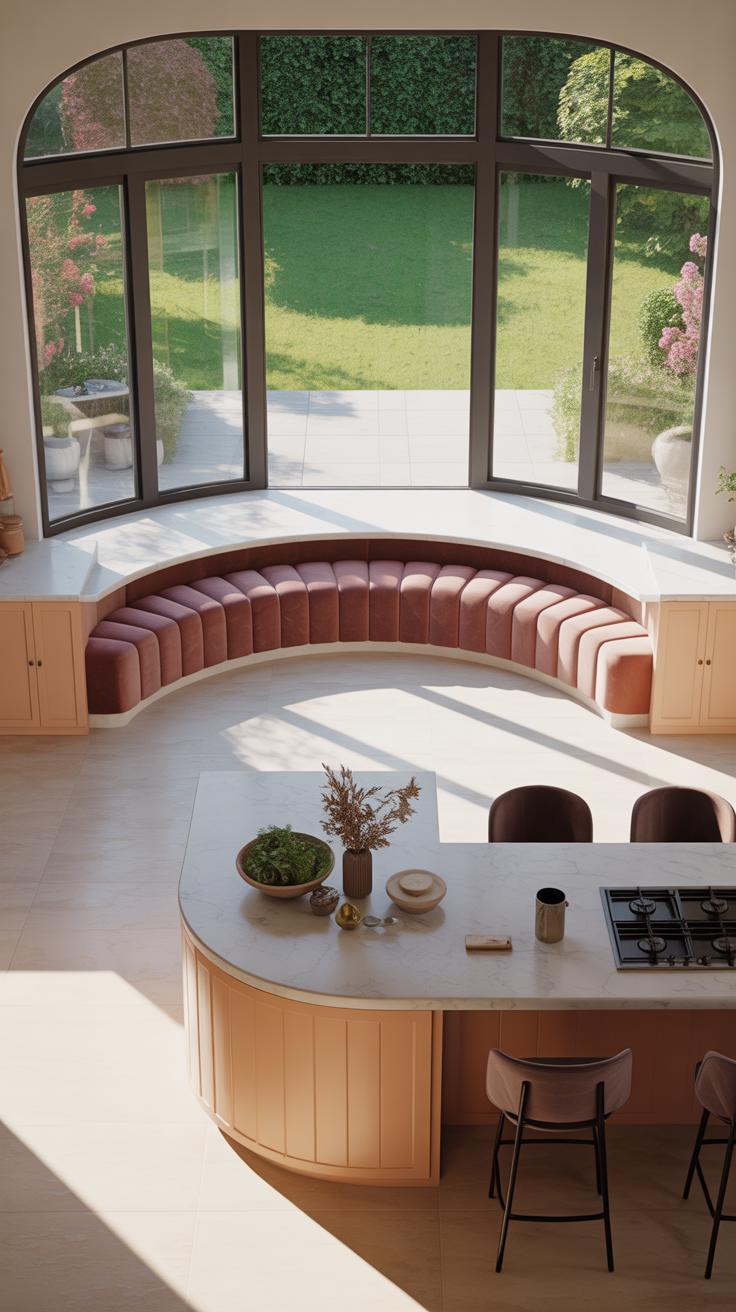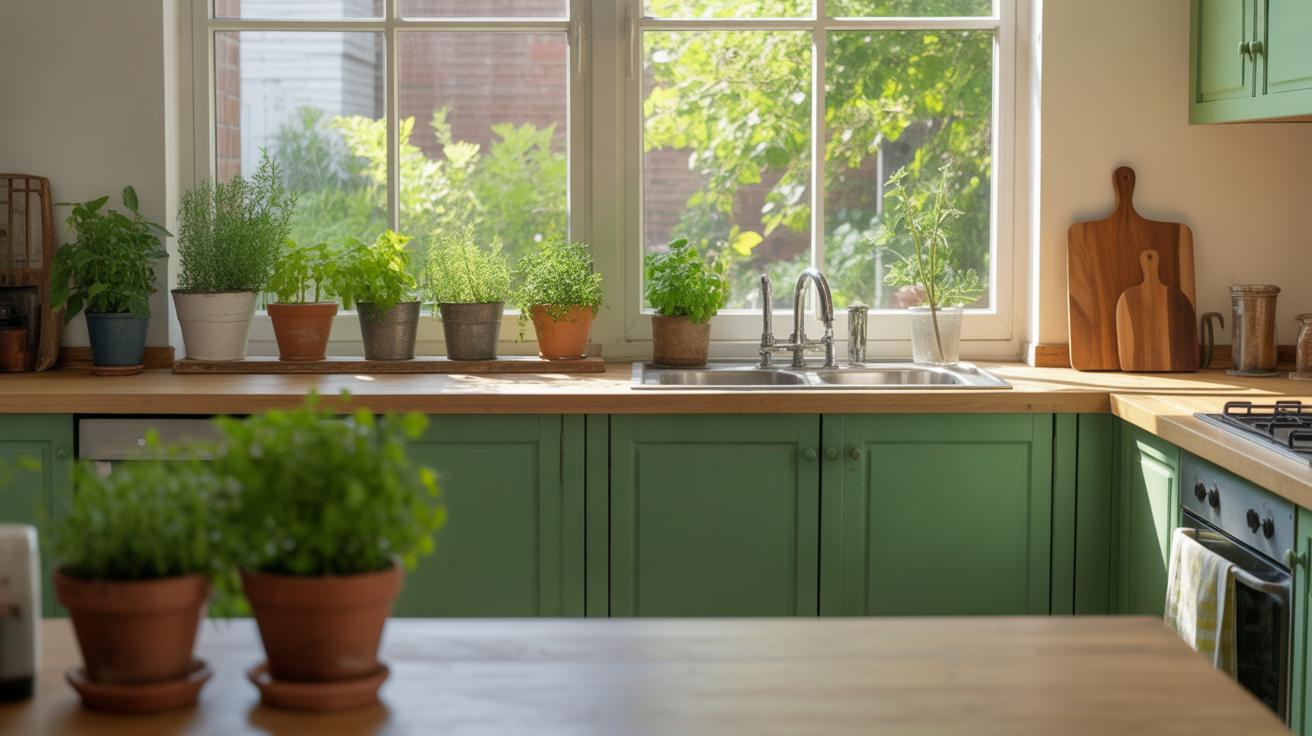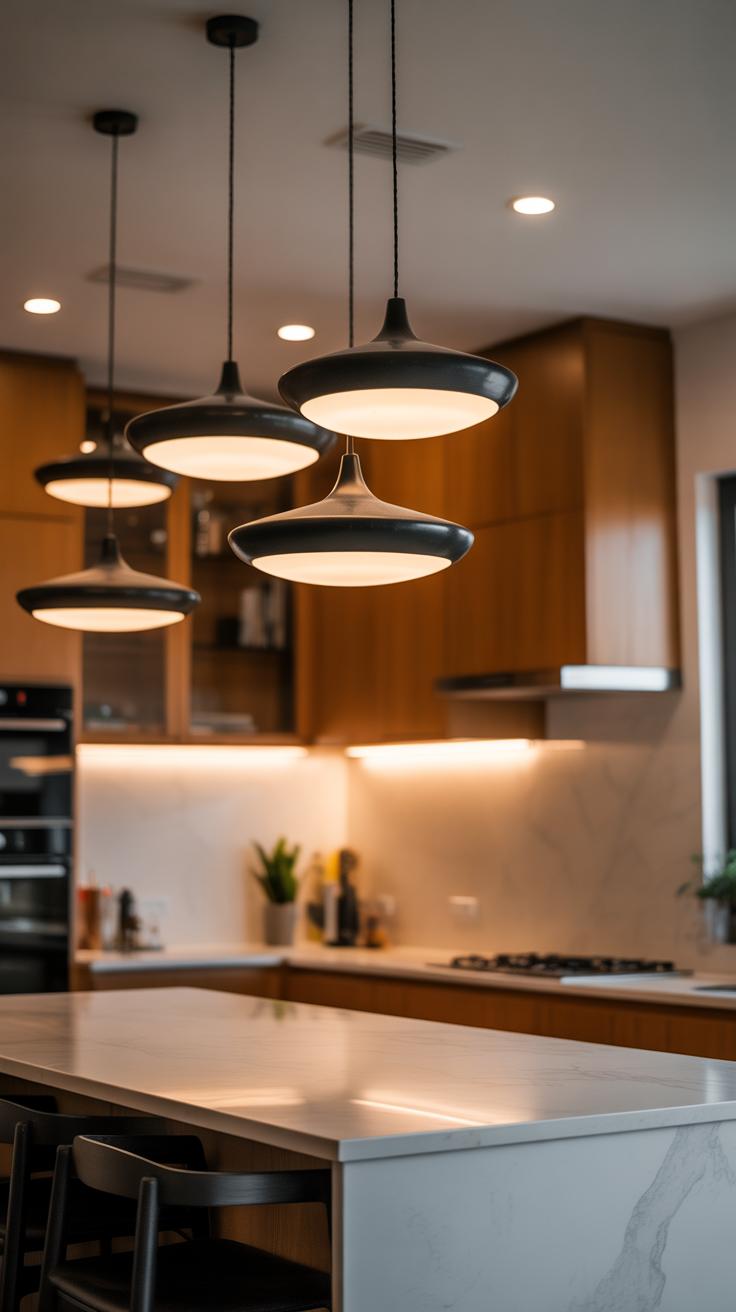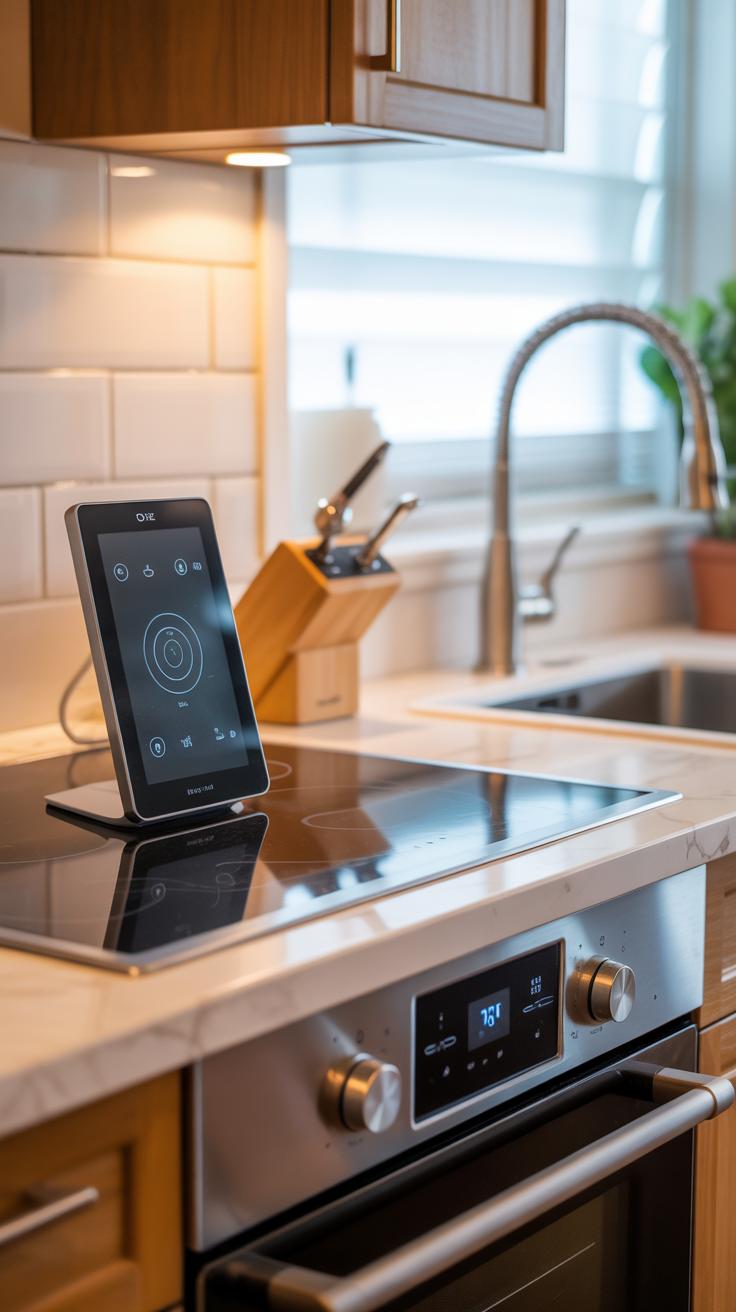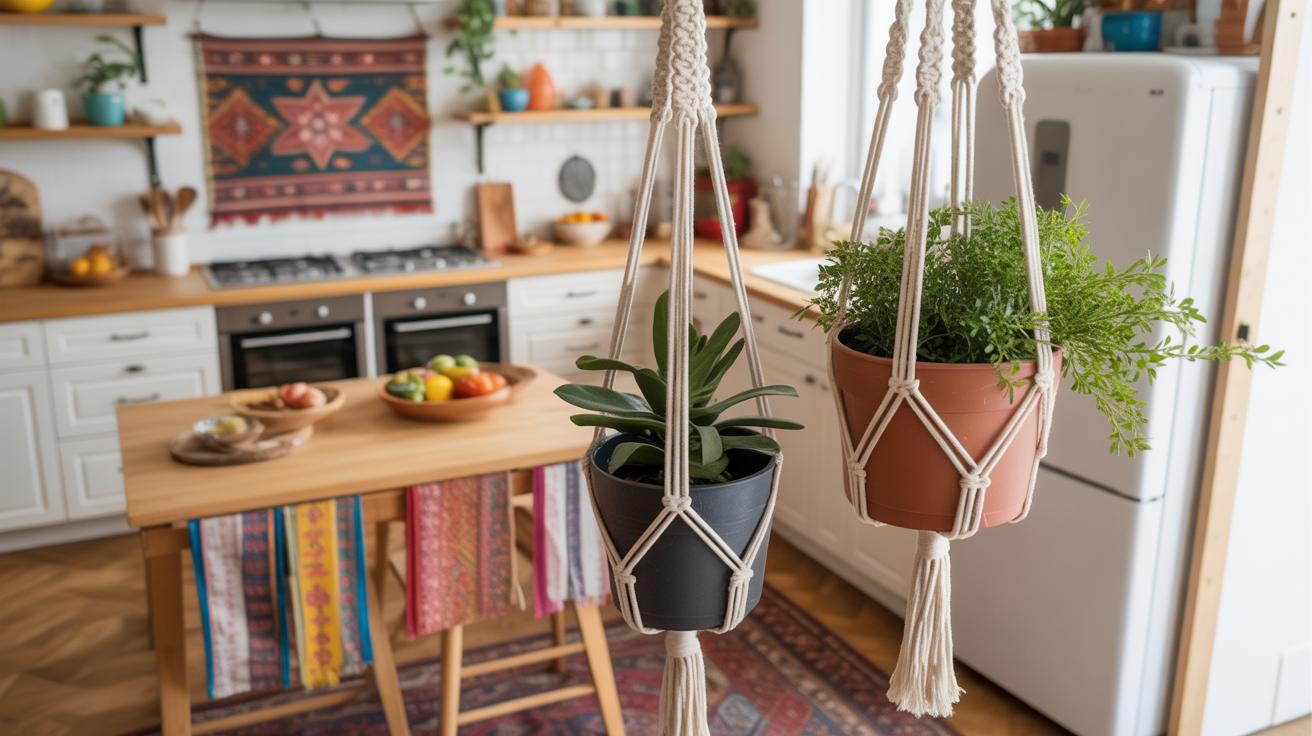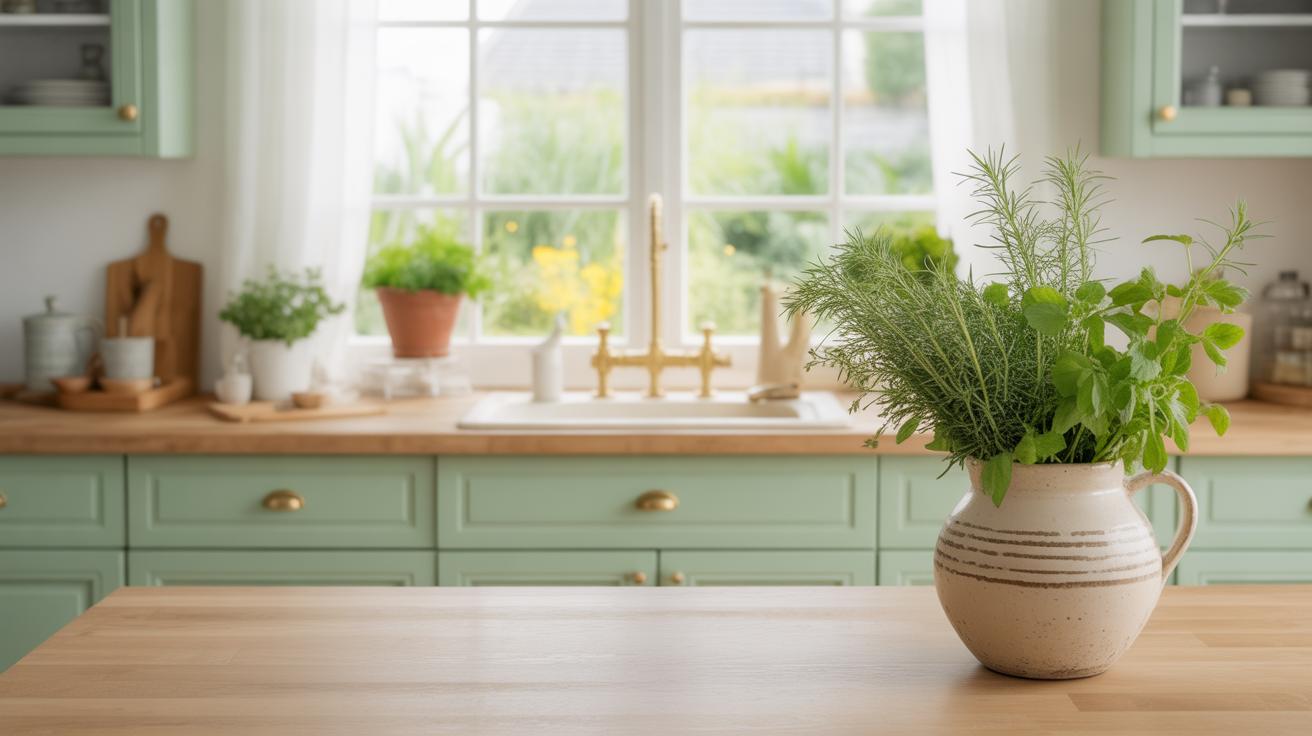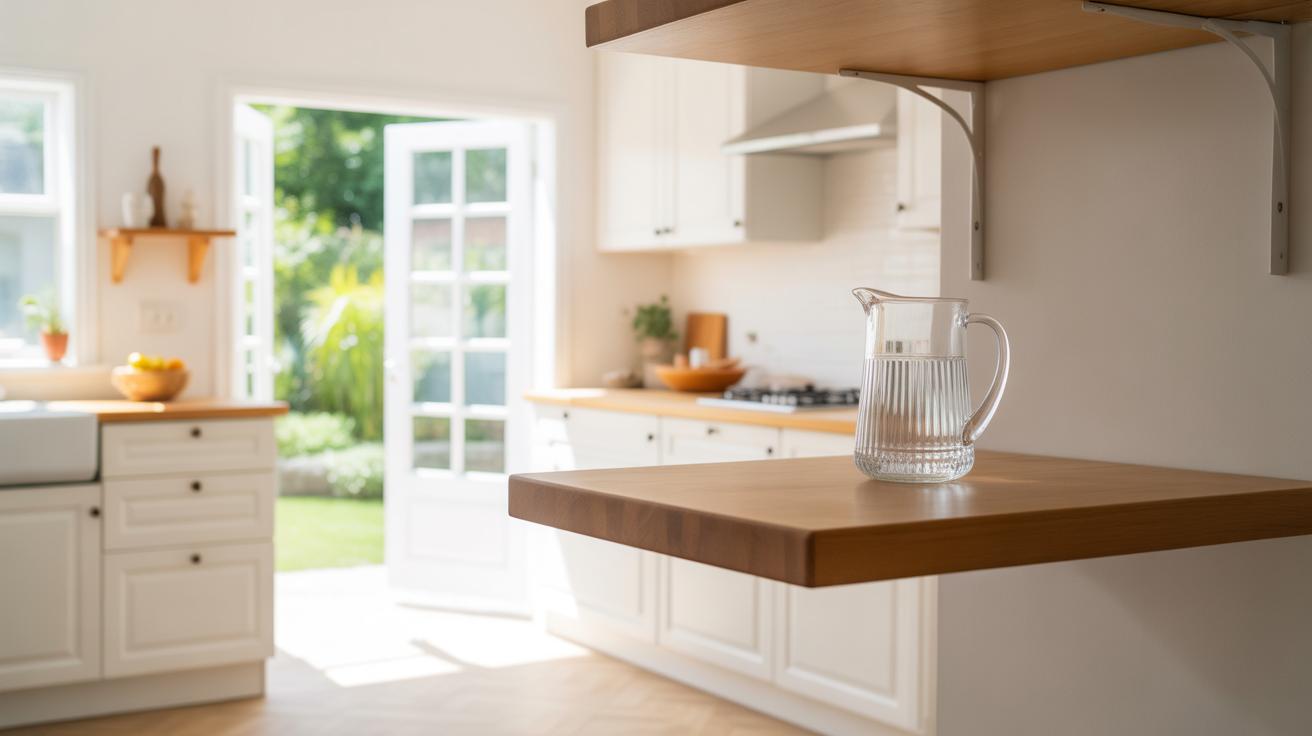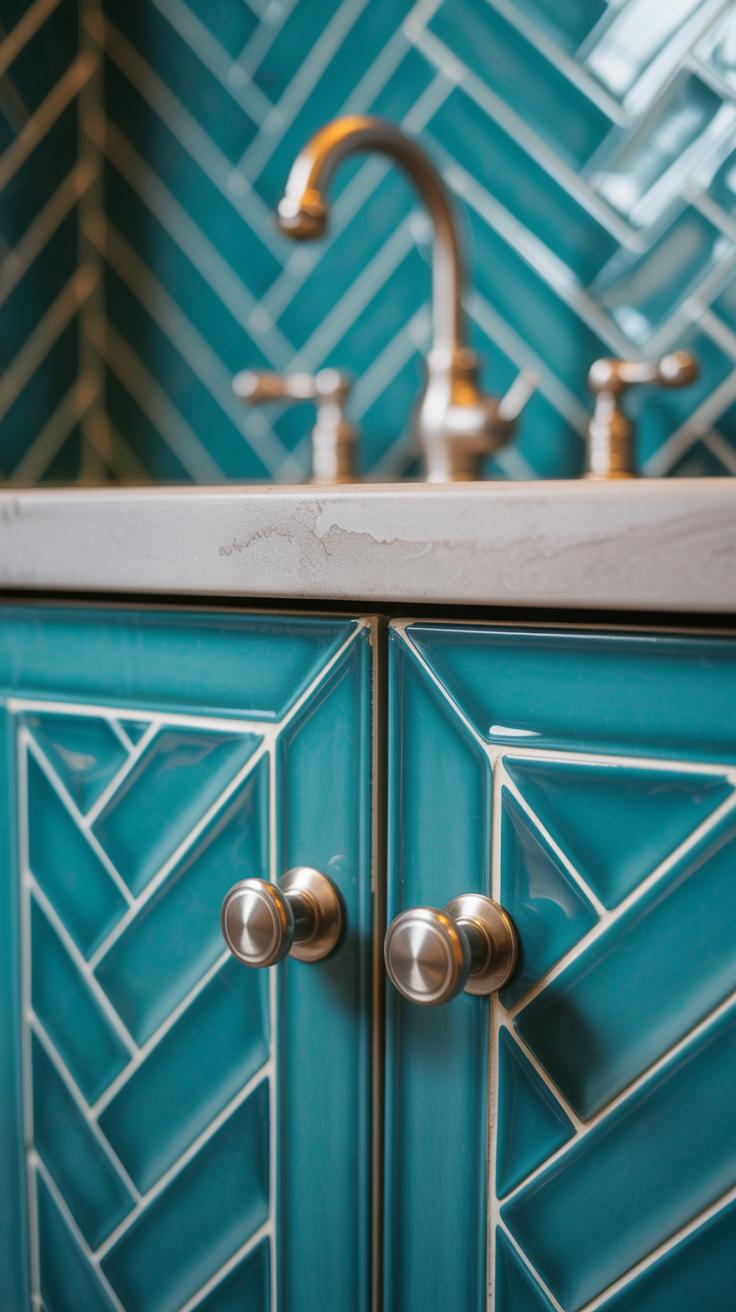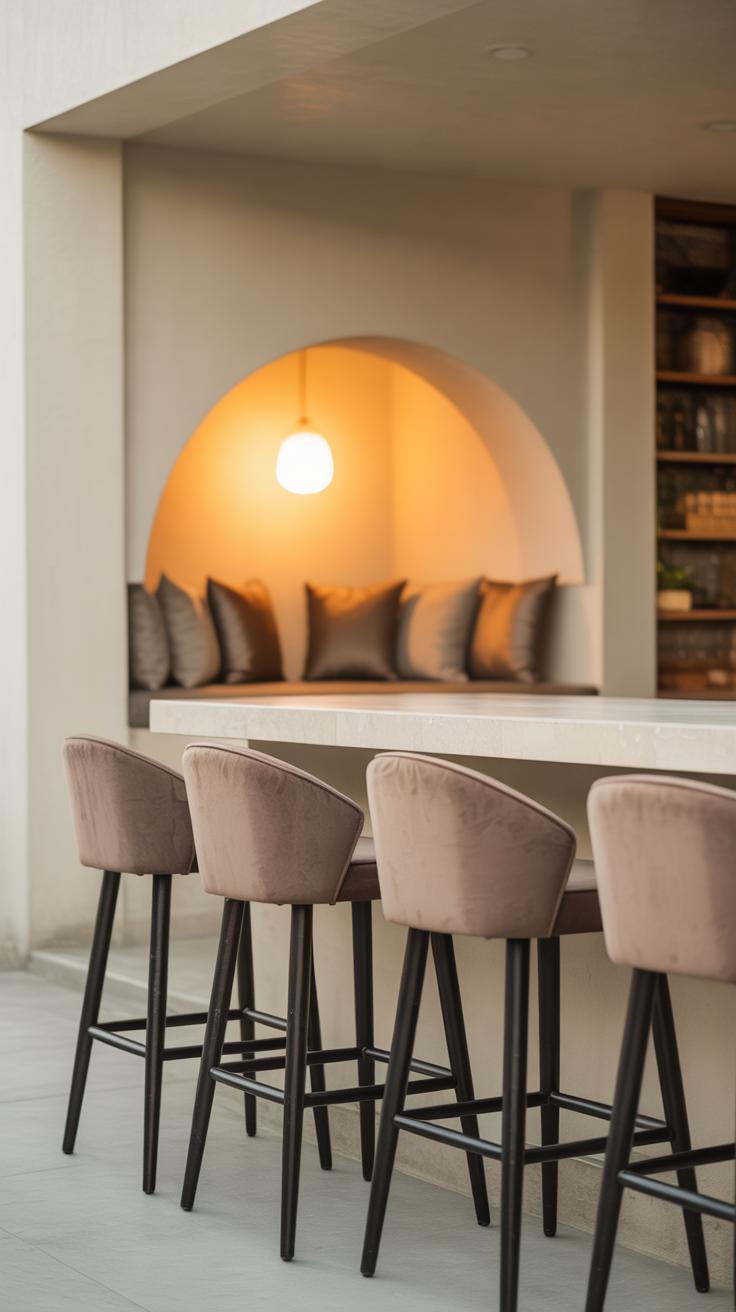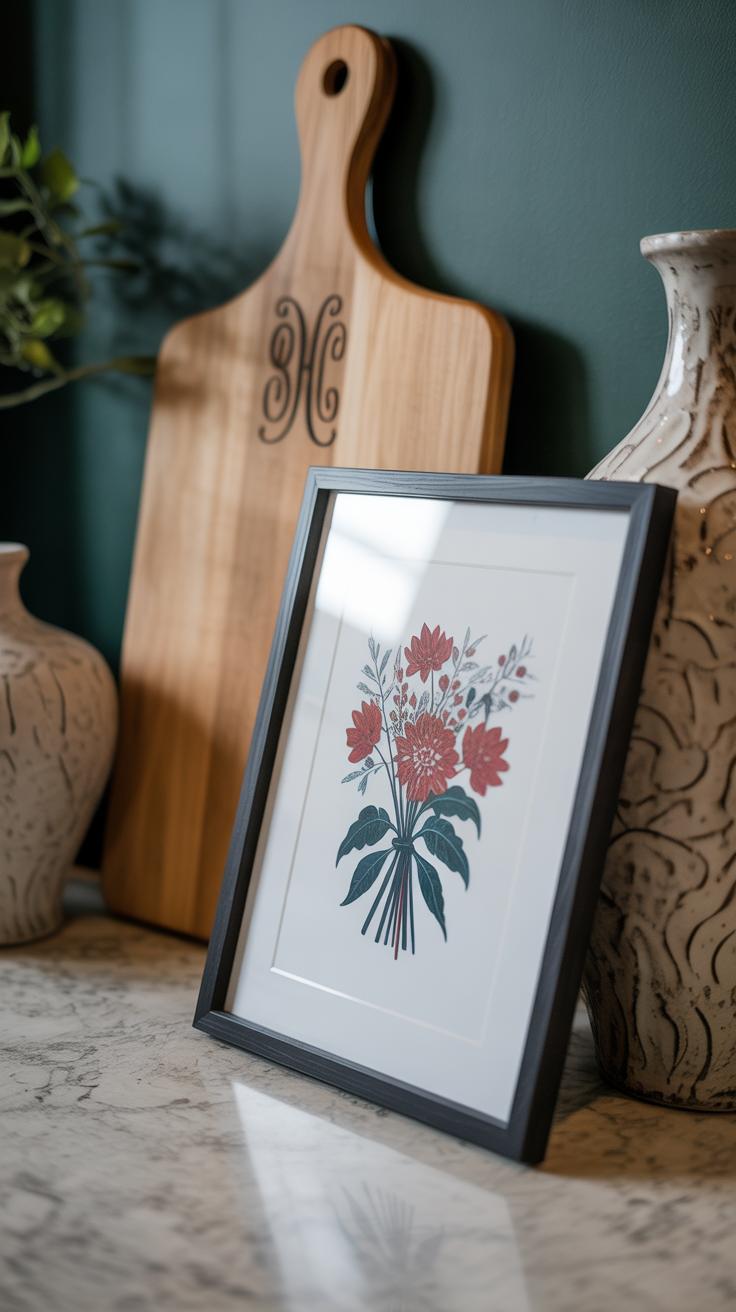Introduction
Luxury kitchen design combines style, comfort, and functionality to create a space that is not only beautiful but also highly practical. For homeowners who value high-end decor, keeping up with the latest trends is important to ensure their kitchens reflect sophistication and modern living. This article dives into the current luxury kitchen design trends shaping high-end home decor.
From selecting premium materials to implementing smart technology, we explore how you can transform your kitchen into a luxurious space. You will find ideas and tips on layout, cabinetry, lighting, appliances, and decor that help you create a kitchen that meets your lifestyle and impresses your guests.
Choosing the Right Materials for Luxury Kitchens
When it comes to luxury kitchens, the choice of materials really sets the tone—sometimes more than the design itself. You’ll often find natural stone and marble taking center stage for countertops. Their appeal goes beyond looks. Stone surfaces offer serious durability, standing up well to everyday use while keeping their visual charm. Marble, with its unique veining patterns, brings a kind of understated beauty that feels both timeless and fresh, though it does need a bit more care to avoid stains.
Hardwood plays a significant role in luxury kitchens too, especially in cabinetry and flooring. Woods like walnut, cherry, and oak tend to be favorites because they add warmth and a subtle elegance that makes a kitchen feel inviting without being overly formal. There’s a tactile pleasure in running your hands over smooth wood cabinets or sinking your feet into a wooden floor—it creates a connection to the space that stone alone can’t offer.
Metal finishes often complement these materials, especially in hardware or fixtures, introducing a sleek contrast to wood and stone. But when you’re choosing materials, think beyond the surface. Ask yourself how they perform over time, how they interact with light, and how they contribute to the overall ambience you want. Sometimes the best choice isn’t the flashiest but the one that ages gracefully with your style.
Kitchen Layouts Suited for Luxury Living
Luxury kitchens often embrace layouts that balance form and function in ways that feel natural but still impressive. The island, open-plan, and U-shaped designs all play distinct roles here. Islands, for example, don’t just add countertop space; they act as social anchors. Think about a kitchen where people naturally gather around the island, whether for quick meals or chatting while dinner is in progress.
Open-plan layouts blur the boundaries between cooking and living spaces. You get this continuous, inviting flow that lets conversation happen effortlessly. It might not be for everyone, though—some prefer walls or subtle separations to keep cooking smells and noise at bay.
U-shaped kitchens, with countertops and cabinets on three sides, create a private working triangle. It’s a setup that minimizes steps between sink, stove, and fridge. Yet, this layout might feel a bit enclosed if the kitchen isn’t large enough—so sizing matters.
Each layout alters how you move and interact in the space, but they all aim for livable luxury, not just showoff design. What kind of kitchen vibe feels right to you?
Benefits of Kitchen Islands
Kitchen islands are more than just extra workspace. They become the heart of many luxury kitchens—serving multiple roles at once. You get a spot for food prep, casual dining, even working on a laptop or helping kids with homework. Islands often incorporate sinks, cooktops, or storage, which means you’re centralizing key tasks.
It’s surprising how much having a central island can draw people in. It invites informal gatherings and shifts the kitchen from a purely functional room to a social hub. That said, if you place an island without thinking about flow, it might block movement. The best islands leave enough space to move freely around them.
If you’re often hosting or enjoy spending time in the kitchen, an island might just redefine your daily rituals.
Open Plan Kitchens for Entertaining
Open-plan kitchens are popular for a reason: they dissolve barriers between the cooks and their company. When the kitchen flows directly into the living or dining areas, it encourages more interaction. You aren’t sequestered away; guests can watch, chat, or even lend a hand while you prepare meals.
This design supports a relaxed atmosphere, but it demands good planning. Without walls, cooking sounds and smells travel easily. That’s a trade-off some people accept, though for others, it requires clever ventilation and acoustics.
The furniture layout becomes crucial, too. Balancing seating, walkways, and kitchen function can be tricky. Still, the result can feel open and inclusive, which suits a modern lifestyle where spaces blur and mingling happens naturally.
Lighting Essentials in Luxury Kitchens
Lighting plays a quiet but powerful role in shaping how a luxury kitchen feels and works. It’s more than just illumination—it sets the mood, directs attention, and even influences how tasks get done. Without good lighting, even the finest kitchen details might fade into the background or cause frustration when prepping meals.
Ambient and Task Lighting
Ambient lighting offers the foundation—soft, overall light that fills the space without overwhelming. Imagine a kitchen that feels welcoming, where shadows don’t lurk in corners, but the glow isn’t harsh or clinical. That’s ambient lighting at work. On the other hand, task lighting is more focused. It zeroes in on areas like countertops, stoves, or sinks where the real action happens. You might overlook how much better chopping vegetables or reading recipes becomes with well-placed task lights. Good luxury kitchens balance both: ambience for social moments, task lighting when precision is needed.
Using Accent Lighting for Style
Accent lighting adds personality. It draws the eye to architectural features, artwork, or textures in cabinets and backsplashes. Sometimes, it’s subtle—like under-cabinet LED strips casting a faint glow. Other times, it’s bold, spotlighting a sculptural range hood or a hand-painted tile. This kind of lighting can change how a space feels throughout the day, offering warmth in the evening or drama when entertaining. Though it’s less about function and more about flair, accent lighting often ties the entire kitchen’s style together in a way few other elements can.
Integrating Smart Technology in Kitchen Design
Smart kitchen gadgets and appliances have shifted from novelty to necessity in luxury kitchens. Take smart refrigerators, for example. These aren’t just cool, they’re practical. Imagine a fridge that tells you what’s inside without opening the door, or even suggests recipes based on your current ingredients. Sometimes, I catch myself wondering if I’m relying on this technology a little too much, but there’s no denying the convenience.
Smart faucets with motion sensors let you turn on water without touching handles. It’s small, but something about that hands-free control feels almost futuristic—and cleaner. Lighting controls can now adjust brightness and color via apps, fitting your mood or task perfectly. You might think it’s overkill for some, yet in a kitchen, these subtle changes add up.
Smart Appliances for Efficiency
Smart ovens let you cook remotely or check cooking progress through an app, which can mostly save time and prevent burnt meals. Then there’s the smart dishwasher that recognizes the load size and soil level, choosing the right cycle automatically. These appliances don’t just make life easier—they rethink daily kitchen rhythms.
I’ve noticed, though, that sometimes these gadgets demand more attention. If the app glitches or Wi-Fi cuts out, things become complicated faster than expected. So, smart doesn’t always mean simpler.
Voice and App Controls
Voice assistants like Alexa or Google Home can control kitchen devices simply by asking—turn on the oven, dim the lights, or check the fridge’s temperature. Apps extend this even further, letting you schedule appliance use or monitor energy consumption. The idea of managing everything through voice or your phone sounds like a dream, albeit some mornings I forget the right command and end up talking to the microwave way too long.
Still, the ability to operate your kitchen hands-free might be one of the best conveniences smart technology offers. But, do you find it natural, or does it take a while to get used to? It’s a small adjustment in an otherwise familiar space.
Selecting Luxurious Appliances for Your Kitchen
When choosing appliances for a luxury kitchen, it’s not just about looks—though appearance matters a lot—but also about how these tools actually perform day to day. High-end brands like Wolf, La Cornue, and Miele often come to mind because they blend precision with design that fits upscale spaces. I remember seeing a Wolf dual-fuel range that combined gas burners with electric ovens, offering precise temperature control and a stylish finish that felt almost sculptural.
Think about luxury stoves or ovens as investments—features like convection baking, steam options, or multiple cooking modes can make a real difference. Sometimes, you don’t need all the bells and whistles, but having that level of control means your kitchen can handle a simple roast or a complex soufflé equally well.
Refrigerators in luxury kitchens aren’t just cold boxes. You’re looking at models from brands such as Sub-Zero or Gaggenau that offer advanced preservation technology—humidity control, air purification, even UV light options. And if a seamless look is a priority, panel-ready units that hide behind custom cabinetry can keep the space feeling calm and continuous.
Storage solutions within refrigeration also matter. Adjustable shelves, dedicated beverage centers, and discreet drawers can help keep things organized without disrupting the sleek aesthetic you’re aiming for. It’s a mix of convenience and style—if your fridge stands out for all the right reasons, you might find yourself lingering near it more than usual.
Cabinetry and Storage Innovations
Custom Cabinet Designs
Custom cabinetry plays a key role in shaping luxury kitchens. When you choose custom cabinets, you’re not just picking a style—you’re crafting storage that fits your space and needs almost perfectly. You can specify dimensions to use every inch, from toe-kick drawers to ceiling-high cupboards. Some designs include hidden compartments or specialized sections for wine bottles, cutting boards, or even rarely used gadgets. It’s not just about filling the room; it’s about creating a visual flow that compliments the overall design.
What’s interesting is how these cabinets can reflect personal taste while still serving a purpose. For example, you might want sleek, handleless fronts to keep a minimalist look but with soft-close drawers inside that surprise you every time. Or perhaps rich wood finishes that show off craftsmanship but include built-in dividers for utensils and spices. Custom designs let you decide—your kitchen stops feeling like a generic space and becomes more tailored to how you truly use it day-to-day.
Organizers and Efficient Storage
Beyond just shelves and drawers, modern organizers bring a whole new level of tidiness and access. Pull-out spice racks, tray dividers, and pegboards can break up clutter, making it easier to locate items quickly. Some kitchens integrate rotating carousels inside base cabinets or vertical pull-outs for baking sheets and trays. It’s about keeping things visible, reachable, and neat, especially in big kitchens where it’s easy to lose track of tools.
Another smart addition often overlooked is drawer inserts for knives or flatware—they keep sharp objects safe and utensils sorted without extra containers. And yes, while some systems can feel a bit overly complex, many luxury kitchens balance technology with simplicity in these solutions. Consider how being able to open just one drawer to access nearly everything can subtly improve your cooking experience. It’s those small touches that, well, maybe you hadn’t thought much about before, but once you have them, you wonder how you lived without.
Adding Stylish Touches with Backsplashes and Hardware
When it comes to luxury kitchens, backsplashes and hardware do more than just fill space—they can shape the entire feel of the room. Choosing the right backsplash material means balancing style with practicality. Tiles remain popular, but not just any tiles. Think large-format porcelain with subtle textures or handmade ceramic with imperfect edges that bring a bit of character without overwhelming the space. Glass backsplashes offer a sleek, reflective surface that can brighten the kitchen and make it feel more open, but they might require more upkeep than some expect. Metal backsplashes, especially brushed or hammered stainless steel or copper, add a tactile dimension and introduce a kind of industrial polish that some high-end kitchens can pull off with surprising warmth.
Patterns also play a role—you might lean toward classic subway tiles laid in a herringbone or diamond pattern for a twist that stops short of overdoing it. Sometimes randomness works better, like asymmetrical mosaics or irregular natural stone, evoking a sense of handcrafted luxury.
Hardware is where you personalize luxury. It’s easy to overlook knobs and pulls, but the right choices anchor the design. Consider matte black or aged brass finishes for a timeless yet current feel, or explore crystal and glass knobs for a splash of elegance that feels almost vintage. Styles might range from sleek, linear bars that harmonize with minimalist cabinetry to ornate, vintage-inspired handles that hint at history. These small details add depth and can even inspire the rest of your kitchen decor choices.
Ask yourself: what kind of statement do you want your kitchen to make? Edgy and modern or soft and inviting? Your backsplashes and hardware can tell that story, quietly but unmistakably. The trick is to choose elements that feel intentional rather than forced.
Creating Comfortable and Functional Kitchen Seating
When it comes to luxury kitchens, seating isn’t just an afterthought—it plays a vital role in how the space feels and functions. Think beyond basic chairs. The right seating invites people in, making the kitchen a spot where conversations linger and meals stretch out comfortably.
Bar Stools for Kitchen Islands
Bar stools around kitchen islands aren’t just for quick bites anymore. Their design has evolved to blend style and comfort in ways that can surprise you. Plush cushioning, curved backs, and adjustable heights are all features that luxury stools bring. You might want to pick stools that match the island’s finish or contrast boldly—it depends on your vibe.
Imagine a row of sleek leather stools with brass legs lining your island. Guests are drawn in, not just to eat, but to chat while you cook. The seating becomes an extension of your living space, blurring the line between dining and prepping. Because let’s face it, who wants to stand alone when the food’s ready?
Dining Spaces Inside Kitchens
Integrated dining areas within kitchens add another layer of comfort and usability. They pull people together naturally, encouraging longer stays and more interaction. This could be a built-in banquette tucked into a sunny nook or a stylish table that complements the kitchen design.
These spots work well when you want a more relaxed dining experience or a place where kids can do homework nearby. They make the kitchen more than just a cooking zone—it’s part of daily living. Sometimes, having a cozy corner to linger feels just right, especially when hosting friends or family.
Personalizing Your Luxury Kitchen Design
Choosing colors in your kitchen isn’t just about aesthetics; it really sets the mood and can even influence how the space feels. Darker hues like midnight blue or forest green bring a calm elegance, turning your kitchen into a cozy spot, while lighter shades such as cream or soft gray add brightness without losing sophistication. Sometimes mixing warm tones with cooler ones—like mustard accents against slate walls—creates an unexpected, yet inviting balance. It’s tricky to pin down a perfect scheme, but testing small patches or trying out swatches can help you decide what truly fits your style.
Artwork isn’t just for living rooms anymore. Hanging a bold painting or a framed photograph in your kitchen can spark conversations or just make you smile while cooking. Unique pieces—maybe something inherited, or a quirky collectible—give the kitchen a voice that’s all yours. Even functional items, like handcrafted pottery or vintage utensils displayed thoughtfully, add layers of charm. It’s these personal touches that shift the kitchen from a simple workspace to a reflection of you, making each moment there more genuine, more you.
Conclusions
You now have a clearer picture of what defines luxury kitchen design in high-end homes. Every element from materials to technology plays a role in achieving a balance between style and function. Remember that a luxurious kitchen is one that suits your needs while reflecting your taste.
Keep exploring options that enhance your kitchen’s aesthetics and convenience. With careful planning and attention to detail, you can create a space that stands out for both beauty and performance. Your luxury kitchen can become the heart of your home—a place to enjoy cooking, dining, and gathering.



